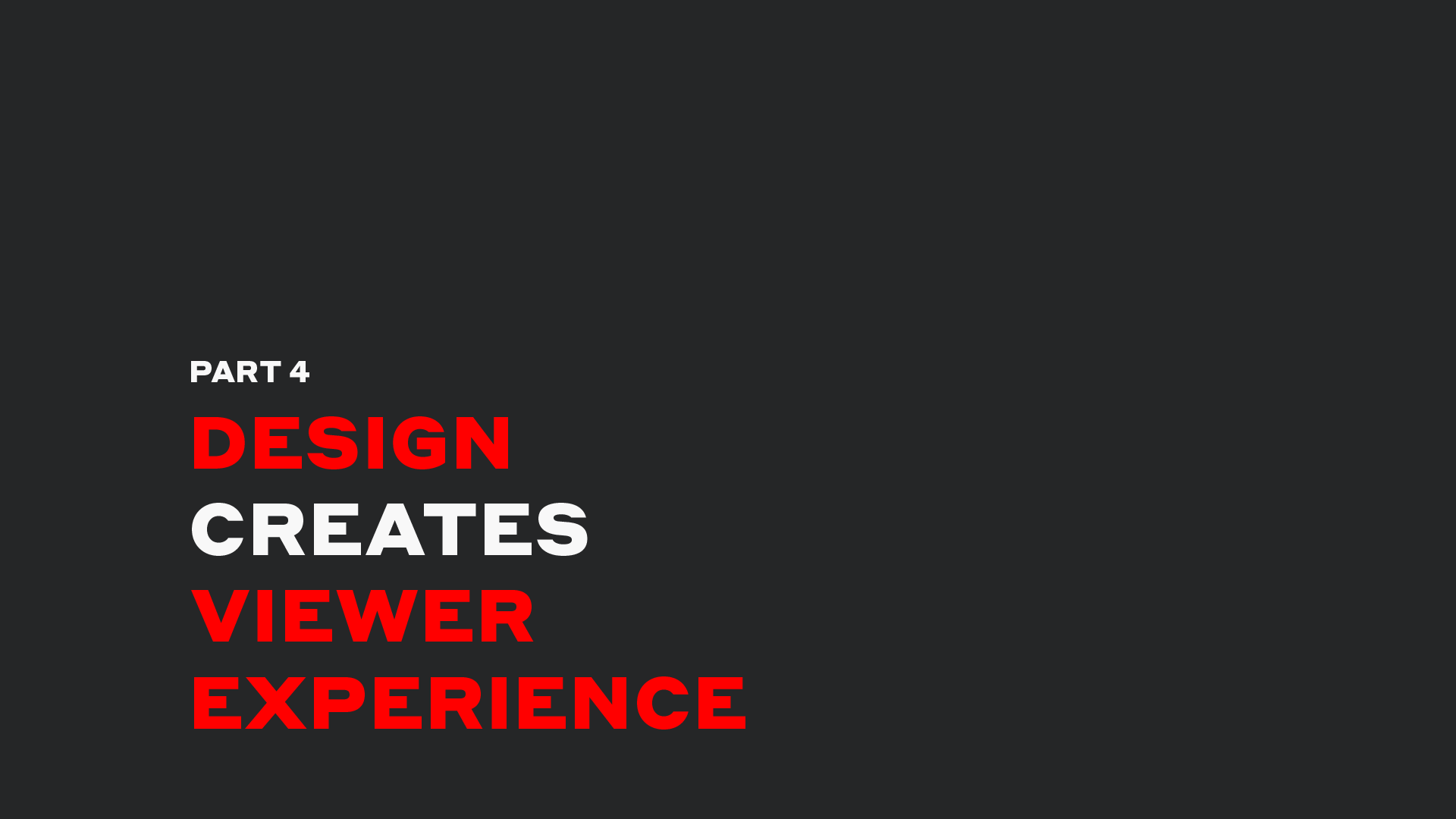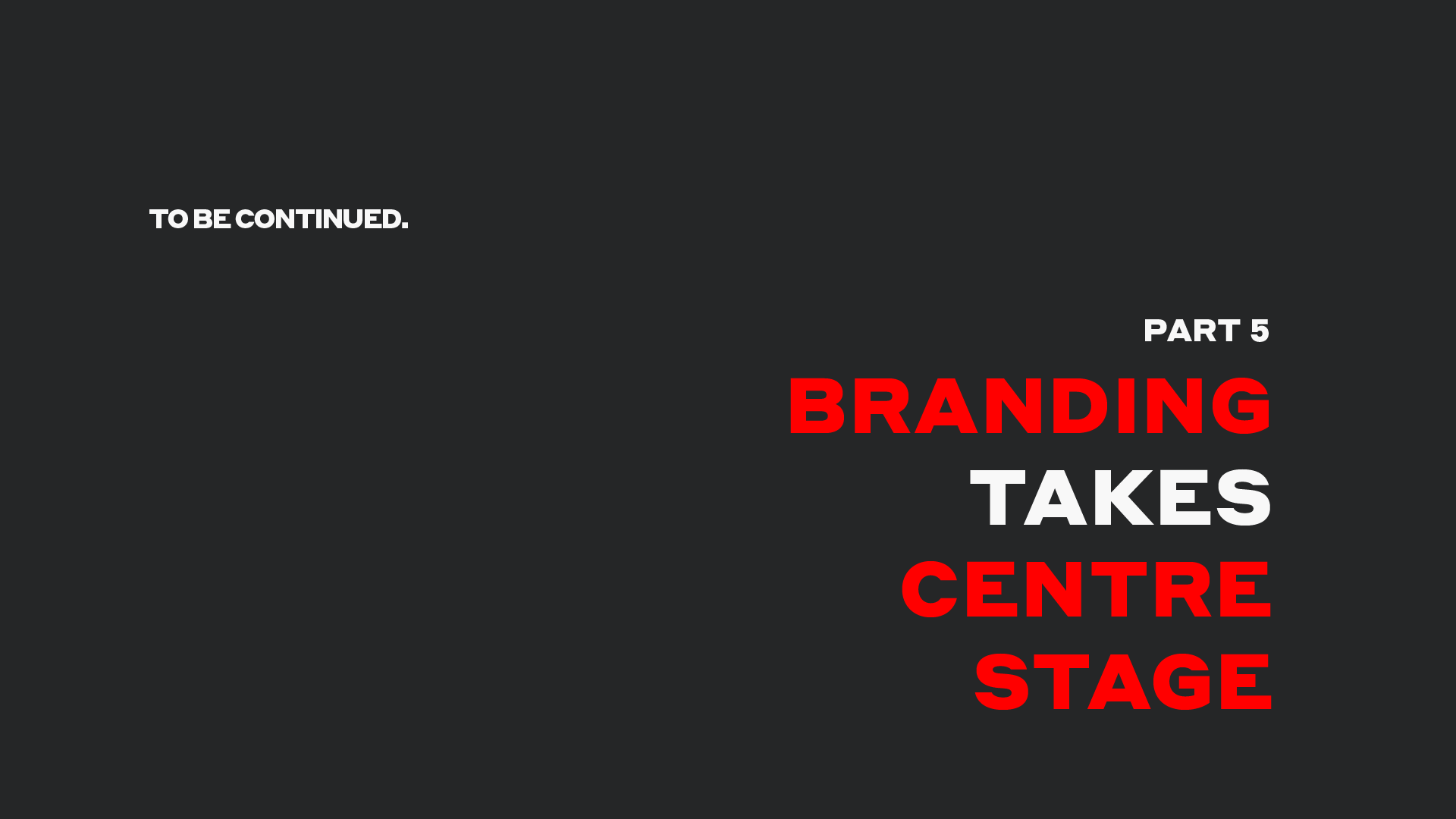Tv is (not) dead (yet) : episode 4
Tv is (not) dead (yet) : episode 4
Today’s world is fluid. So, as designers, we have to be agile thinkers and capable of not only understanding who our clients are, but also the complex and hybrid industries that they work in if we want to be able to deliver the best creative solutions.
In this 5 part series which runs through till Friday, we will examine the main pressures that are shaping the European television market and show how our profession – design – is essential in order to survive in today’s rapidly changing TV world.
We are Gédéon. A creative agency and production company that designs visual identities and creates on air, digital and print communication tools for TV channels as well as for many other types of brands.
Brand design

86% of online consumers
say they don’t want to juggle multiple
OTT services
Consumers are searching for a simplified, centralized experience.
You could argue that TV boxes and smart TVs are providing this by housing all your entertainment platforms in one place. And consumers just need to get used to using their TVs in the same way they already use their phones, choosing and moving between various applications.
Having said this, the VOD market today is becoming saturated with platforms all promising the best viewer experience. So what will differentiate your service from the rest?
Having so many services may be great, but how many OTT services are consumers willing to pay for each month? Having choice is certainly liberating, but having too much choice can quickly become frustrating.
As humans, we already make around 35 thousand choices per day, and so it’s not surprising we get frustrated when we are faced with too many choices, or when we can’t find what we want fast enough.
To add to this, we find platforms offering the same content and largely similar functions.
So in this context, what will drive the viewer to choose your platform over others?
The visual attractiveness, the ease of use, the personalisation opportunities…all of this is design. And Design is therefore fundamental in choosing the platform.
« Design is not just what it looks like and feels like.
Design is how it works »
Steve Jobs
Take the example of a series available simultaneously on Amazon Prime and Netflix.
They basically offer the same content and the same choices, but, they deliver them in different ways…
Netflix displays a very large photo, featuring all the main characters from the show. The image takes up almost the entire screen, allowing the play button to be placed right in the center.
On the other hand, Amazon displays a lot of written information and a smaller image of the show’s logo in the top left. We find the play button in a list of two choices on the far right. But what catches the eye are those tabs, one tab per season available.
Transparent and informative, yes, but does it inspire you to watch? I know it seems like we’re splitting hairs here, but the big difference is this : By prioritizing visuals and placing the play button right in the center of the wide-screen image, Netflix encourages you to dive straight into the content. Whereas what are we offered by Amazon Prime? More choices….
Remembering what we said about choice and frustration, as a user, I know which one I would sooner watch…
Independently of the content, the user experience is key when it comes to choosing between two platforms.
This means as designers we need to empathise and think from the user’s perspective. The information architect, Peter Morville, defined good User Experience design in these terms : Valuable, Useful, Desirable, Accessible, Credible, Findable, Usable.
And it’s our job to help you to stitch these elements into the best experience for your consumer.
A key objective of your platforms is to ultimately minimise time spent scrolling and maximise time spent enjoying the content.
So, when the choice of program is more often than not based on a fixed image, the design of the artwork is vital.
You can’t make do with just a screenshot of a scene, you must show a visual that provokes the viewer’s interest and desire to watch it; something that resembles a movie poster is going to be far more evocative and effective.
Added to this, the artwork must be created in multiple formats to suit different devices.
Regarding artwork, therefore, there are 2 design strategies.
Either you keep the original poster visual, capitalizing on the strength of the program itself, but risk finding the exact same visual on your competitors’ platforms.
Or, you claim ownership of the content in some way; even if it isn’t necessarily an “in house” production, you adopt a clear style to reinforce your brand.
This is what Hulu has decided to do with the design of their video app.
Hulu puts green frames onto their program “vignettes”, thereby reinforcing their brand’s presence and creating the sense that every show and film is “Hulu” produced, even if in reality it isn’t.
We proposed this same technique to one of our Spanish TV clients, La Sexta.
We came up with a very bold branding, based upon the hexagonal shape of the channel’s logo. We then extended this new style beyond the design of the interface, to the visuals of the shows themselves. We built a visual grammar that allows the graphic incarnation of every program in the same style of the brand logo.
This was a good way to establish the channel’s uniqueness, even by promoting shows that have already been aired by other broadcasters. But it also forged a connection with audiences, by creating fun animations and visual jokes around the program’s universe. These kinds of visuals could also easily be used for social media communications.
Let’s not forget that more sophisticated mobile computing devices mean that video entertainment today is everywhere, and TV channels need to think about their presence in the digital world now too.
One of our top priorities at Gédéon is to invent flexible tools and create bridges between the TV promo production and the digital communications departments.
For example, when we won the pitch to redesign one of the leading French entertainment channels, W9, it was largely because, from the beginning of the process we proposed to reshape the promo format around their digital needs.
Inspired by stories on social media, we chose to display every piece of information individually, instead of all together. This allows a better focus on different bits of information and maximizes the overall impact of the promo. Plus, creating promos in this style meant that as soon as it was produced, the packshot was automatically transferred to the digital department to be shared on social media.
We prioritized the brand’s grammar over the identity of the content and made it flexible for multiple use.
But no matter what the scenario, the question of design is fundamental: which colours, typography, codes or systems? And most importantly, for which use?

Next Project
Tv is (not) dead (yet) : episode 5